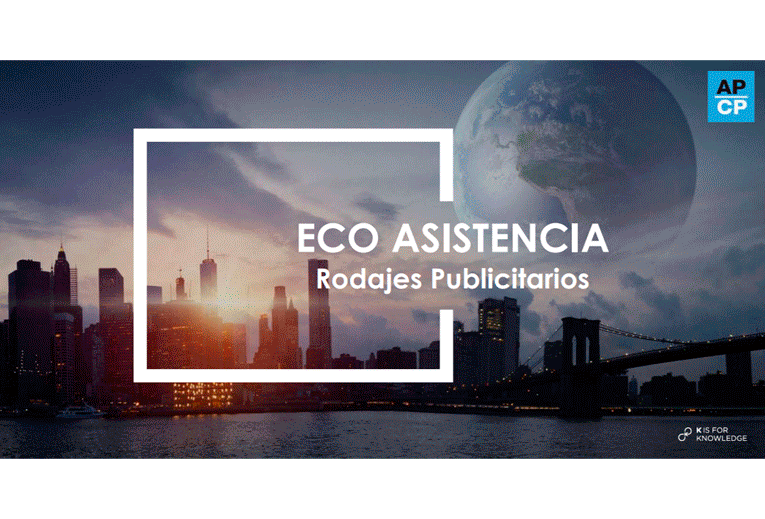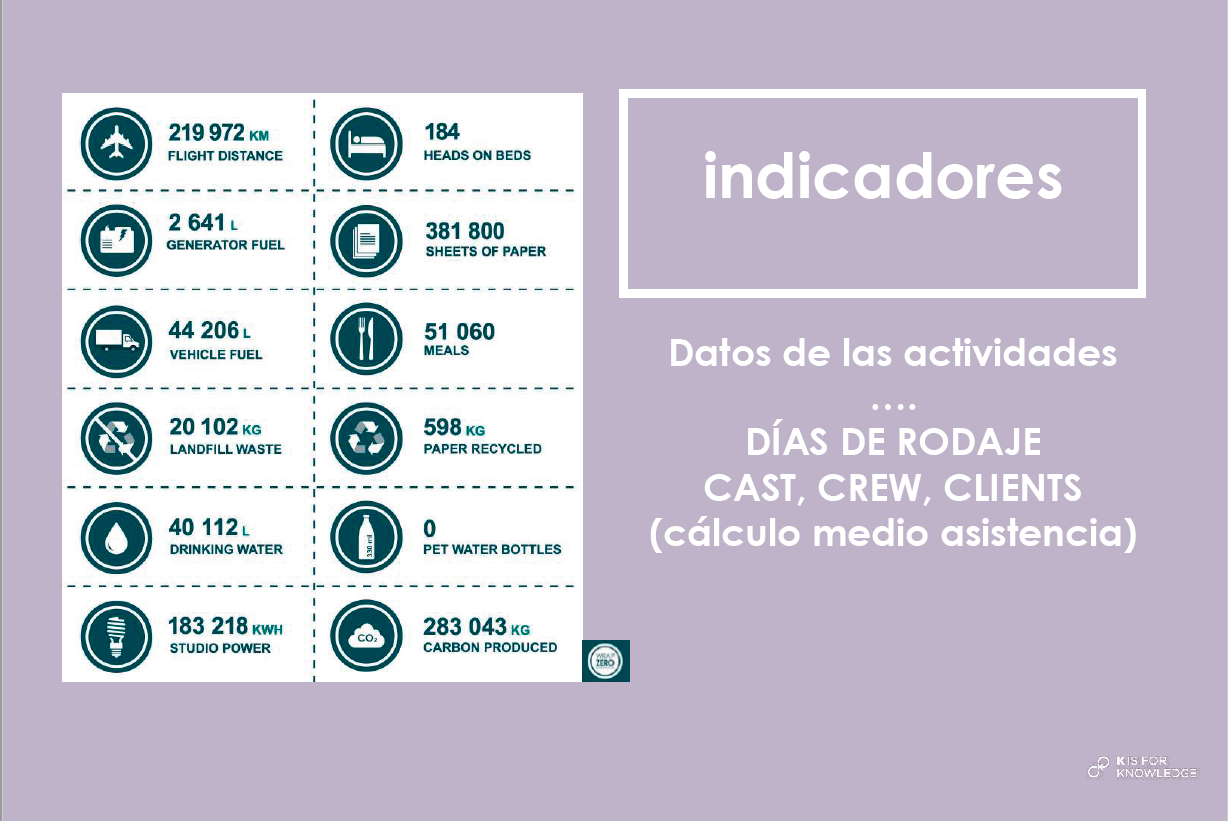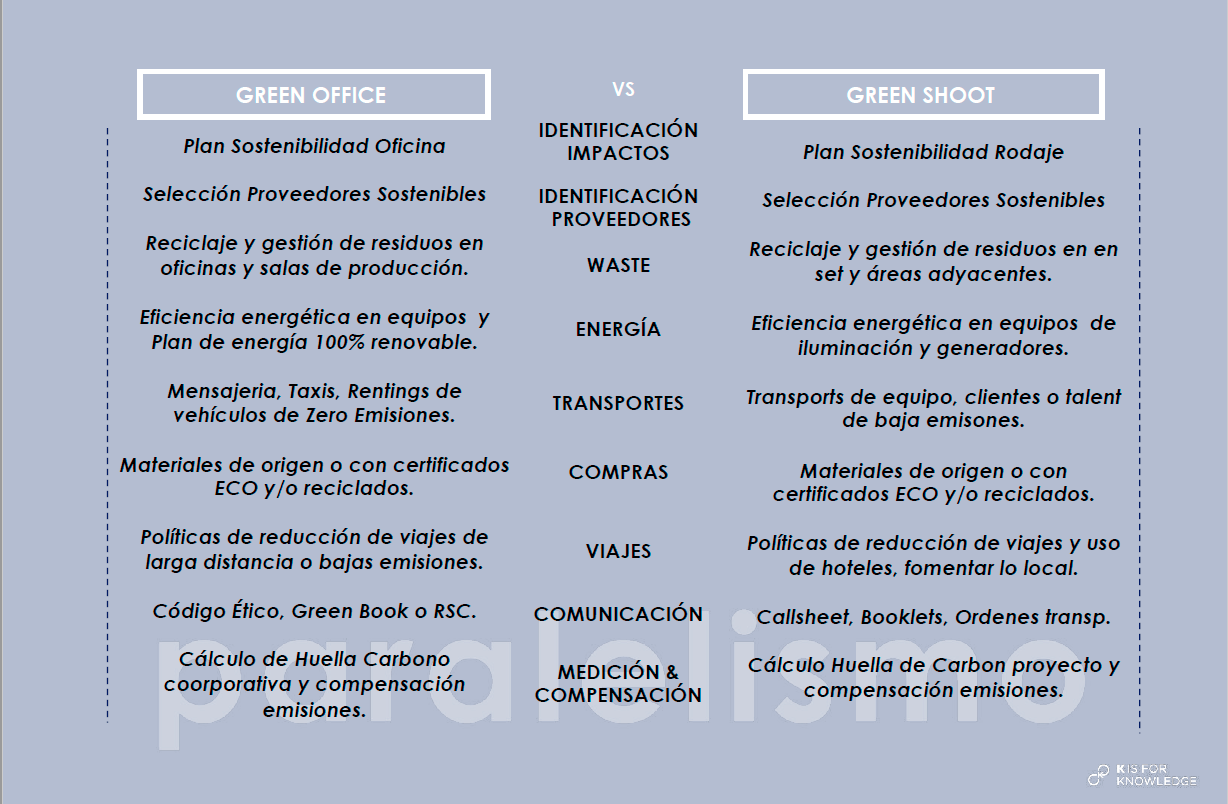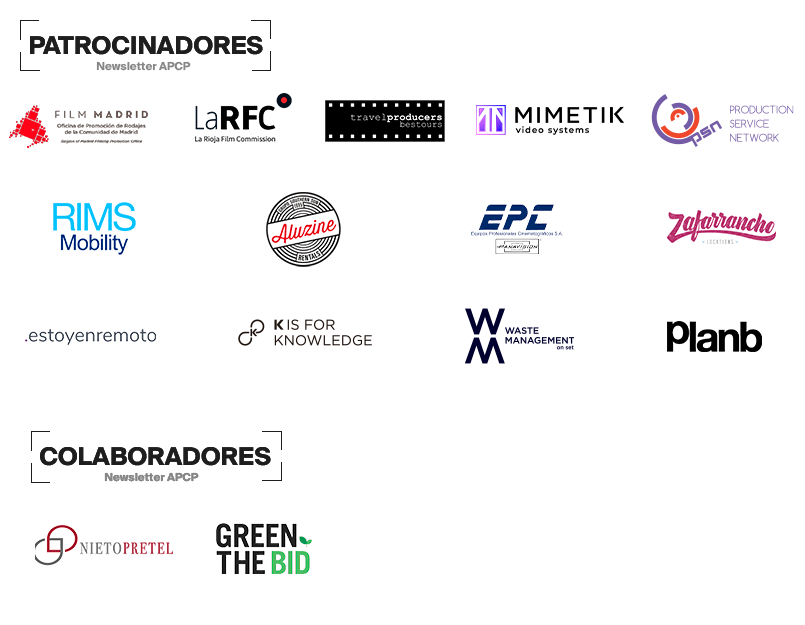
Last Wednesday January 26 was the Environmental Education Day and we held the first APCP Masterclass about sustainable filming.
We are really happy and grateful because of the great welcoming the Masterclass had.
We want to share a summary of how it went.
Who directed the seminar was Oliver Lupiañez MD & Founder of K is For Knowledge. He began contextualizing how is going the sustainability situation in the audiovisual production industry.
This Eco-Assistance process is based on three main blocks: Training, Actions and Evaluation.
Oliver explained the difference between the role of the Eco Assistant and the Eco Manager. Understanding that the Eco Assistant is responsible for making sure that the actions are carried out, gathering the filming data from attendance, and evaluating all the collected data.
The Eco Manager is the one who has more knowledge in project analysis, carbon assessment and calculation, knows how to prepare an action plan.
There must be a sustainability plan, which will be the guide to follow from the very beginning.
It is important to differentiate between long format and advertising and to adapt the plan to each of them.
The main difference, as always, is the time involved in all the filming processes.
In long format there is more time for analysis and identification of impacts in the preparation phase and much less in advertising.
En formato largo hay mayor tiempo de análisis y de identificación de impactos en la fase de preparación y mucho menos en publicidad.
Then we can move on to the actions part, in the preparation phase as in the shooting phase of the main polluting factors: waste, energy, transport, catering, travel, purchases and locations.
Waste
In the preparation phase, impacts can be identified, and solutions can be proposed to suppliers, to anticipate the shooting. For example, talking to the caterer in advance to prevent food wasting.
During filming: having an Eco Assistance & Zero Waste service. This service offers a mobile unit at recycling stations in all departments. This professional figure must be trained in the audiovisual world that way they understand all the departments and processes.
At the end, this special waste is taken to the “Clean spots”.
This service is not always available, but there are other low-cost alternatives, like the public services.
It is very important to have good communication with the team to make sure everyone is on the same boat. This will be repeated in all processes and phases of the sustainability plan.
Energy
It is necessary to be close with the electrical department from the beginning, that way the energy can be adjusted to the generators, to adapt it to what is really needed. It is also very important to use more energy-efficient devices and energy storage devices. Connection to the electrical grid, ideally the administrations should contribute their collaboration and responsibility in this and allow us to connect to their electrical grid.
The shooting studios have to change to renewable energies. Being the Production company the one that sets the example by acquiring energy efficient appliances and communicating responsible policies to all departments and suppliers.
Advising about saving energy during the shooting, changing habits like switching off generators or appliances that are not in use, for instance.
Data collection: fuel, portable generators,
And of course, communication with the team.
Transportation
It is recommended to production to hire from the beginning low-emission vehicles, taxis or transfers with a hybrid or electric fleet.
To optimise transport of people and frequent purchases during the preparation phase.
- Looking for close hotels and restaurants.
- Encourage using public transportation.
- Communication to the team.
During filming, fuel-saving advice can be given on fuel-efficient driving tips and advice on “Anti-idling” policy, which means reducing waiting.
Catering
It is a big waste producer, but it can be a great ally if there is good communication and work team with the suppliers.
In the preparation phase we can already think of a recycling system for our own waste, in the elimination of one use cutlery and packaging or getting 100% biodegradable alternatives for exceptional cases Compost. Reduce food waste and offer tuppers to the team, less healthy designs and vegetarian options, also getting water fountains and bulk products such as coffee or maintenance.
During filming, giving advice on waste management and composting and knowing numbers of diners and surplus. And calculate how many people are going to the shoot to avoid food excess.
Travels
Multiple actions related with travels can be taken: limit travel to essential trips, prioritise AVE in domestic journeys, get economy class in air travel, and with companies that offset their emissions, booking hotels close to the production company or the shooting location that have Eco certificates, and limit travel by technical or artistic team, optimise local resources.
During filming, data must be collected to add it in the calculation of the carbon footprint of trips and hotels that will take place during filming.
Purchases
In the filming industry we purchase tons of thing very quickly.
So, to be more sustainable, renting has to be encouraged, whatever is bought should be ECO, and limit travel by technical or artistic team, optimise local resources.
During filming, data must be collected to include in the calculation of the carbon footprint of trips and hotels that will take place during filming.
Locations
In the preparation, it is necessary to think about and organise the distances and needs that will be present during the filming and to see if there are other alternatives that are closer. Be careful and consider zones or areas of high environmental impact in their fauna or flora and of course be responsible in the assemblies.
During filming, count on the organisation of the Waste Management On Set service, advice on the care of possible sensitive areas and advice on the management of large waste and it is very important to follow up on leaving the location as we found it.
Analysing all the actions that must be carried out, it is necessary to start to understand this as a team, that is to say, as another department within the production company, not just as a single professional that is hired.
The next block is the part of the evaluation of results.
We have to analyse the results in order to draw up reports that will later help us to create an improvement plan, what the reduced impacts have been, what actions have been implemented, what the team’s response has been like.
The objectives have to be looked at by department, i.e. what actions have been carried out in each department.
It is important to understand the data we collect on each indicator so we can be really aware of what our impact is.
Waste report, is the result of all the generated waste and the objective is recycling plus creating proposal for improvement. And be aware that we easily generate between 1kg and 1.5kg of waste per person.
All of this must be understood as a responsibility of each person and of the company in the office and on set.
Carbon footprint calculation is the measurement of all the GHG emitted during a project and in all its phases through its activities.
Calculating this has many benefits:
- Reduction opportunities
- Customers credibility and trust, which in time will be a possible requirement.
- Participate in this innovative development
- CSR, production companies need to create CSR reports, it is no longer enough just showing an economic value, it is also necessary to communicate that things are being done the right way.
- Stakeholder integration, these actions will make your suppliers and collaborators make an effort to work along the same lines as you.
- In addition, you gain a very important differential value.
- Once the data has been analysed, a complete report must be drawn up on how the whole process has been and what the carbon footprint has been.
- With these results we can create a CO2Eq Compensation plan that can be:
- Forestry projects
- Energy efficient projects
- Renewable energy projects
- Carbon neutrality
Finally, it is not the same to be sustainable at a production level than to be sustainable in a project just because the client has asked for it. Here are the differences Oliver explained between Green Office and Green Shoot.
To finish we would like to remind you that in Spain we have great material suppliers, that are increasing their carefulness with the environment, as it can be the case of our friend company Velvet.
So far this is the summary of how the masterclass went, there are still way more things that were discussed, like questions from the participants, so if you could not be there you can watch the full class.







